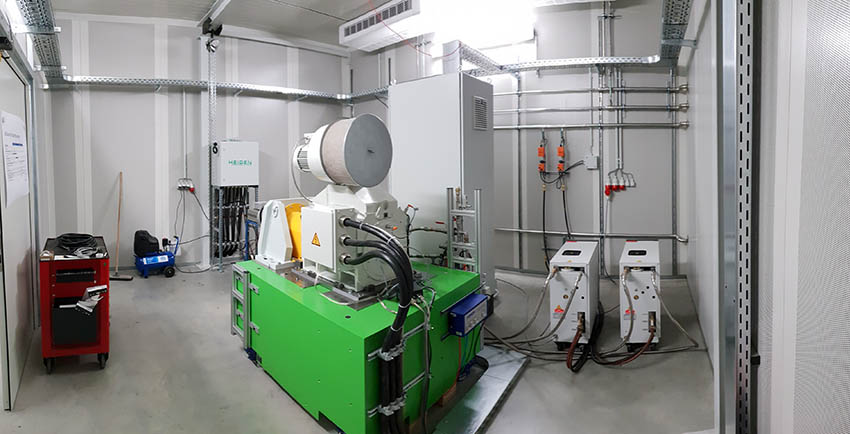Frames and bases for test equipment for engines and transmissions were previously manufactured in steel or gray cast iron. However, the new electric motors have revolutions of up to 30,000 RPM. To prevent vibrations from occurring at the table, which would falsify the measurement result, the frames must be designed to be very rigid.
Well-known test equipment manufacturers in the automotive sector such as Bosch, Horiba or Schaeffler are increasingly relying on the UHPC E80 from Durcrete in Germany. UHPC is a mineral cast, consisting of aggregates like sand and crushed stones and a cementitious, hydraulic binder, which bonds the grains together. Chemically it is the same as concrete for bridges, tunnels and buildings. Due to the innovations in concrete technology and admixtures, the compressive and flexural strength is five times higher than ordinary concrete. In the E80 mix, the natural aggregates are exchanged to artificial ones. This modification boosts the young´s modulus to about 80.000 MPa, more than solid aluminium.
In addition to rigidity, the material has a second advantage. Clients appreciate the good damping characteristics of the material. The good dampening of the mineral cast reduces the swing up of vibrations, when the working frequency of the engine is in the range of the eigenvalue of the base frame.
The company OPV Engineering from Germany is specialized on testing equipment for the automotive sector. The company, which is a spin off from the Karlsruhe Institute of Technology (KIT) in 2013, relies on the Nanodur E80 material from durcrete GmbH for its test frames. Their testing rigs are installed in climatic chambers, where also frost and hot weather conditions are simulated. The natural material concrete is resistance to cold and hot weather conditions and has no problems with these conditions, as well as dirty water, damp and other disturbing surrounding conditions. The pictures shows an example of such an application from OPV, the green block is made of Nanodur-E80.
These technical advantages are convincing more and more customers. Although the costs for the mold are considerable, project-related individual products with one-time molds are also ordered, since the use of UHPC concrete is nevertheless the most economical solution in the overall view.

Testing frame of OPV Engineering in a climatic chamber
Copy right of Photo: OPV Engineering, Karlsruhe, Germany
Most people associate concrete with fat men in yellow rubber boots in a gray sludge. But here we are in a business field with a high precision required. So, the elements are produced in special prefabrication plants. A precision of 0.1mm can be reached directly out of the mould, without any precision works. If a higher precision is required embedded steel plates are milled to the required quality. Durcrete works with partner, which are able to reach a precision of 10 microns over a length of 4,000mm by milling only. In the area of testing frames, very often T-Slots according to DIN 650 are used.
For other fixings like tanks, switch boards etc. threaded sleeves, transport anchors and every kind of steel parts are mounted within the mould, so that they are closed within the concrete. Designed with anchors or undercut, these embedded parts are integral parts of the machine element which cannot be removed without destroying the complete element.
durcrete GmbH
65549 Limburg, Germany
Dr.Ing. Bernhard Sagmeister

